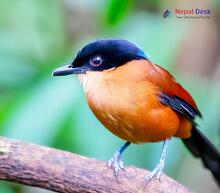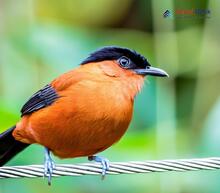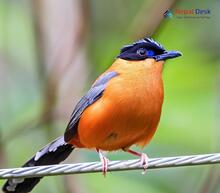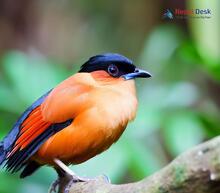In the fascinating world of bird diversity, numerous species spark the interest of scientists and bird lovers alike. The Heterophasia genus is one such group of captivating birds that has piqued the curiosity of many. In this article, we'll take a closer look at these intriguing creatures by examining their evolutionary history, classification, physical features, ecological habits, and existence in Nepal.
The Evolutionary Tree & Classification
The Heterophasia genus is part of the Leiothrichidae family within the Passeriformes order which encompasses passerine or perching birds. Tracing back the bird family tree unveils a complex network of connections among species and their evolutionary paths. The Heterophasia genus comprises several species each displaying unique traits and adaptations to help them survive in their specific environments.
Morphology: Distinctive Characteristics and Adaptations
Birds within the Heterophasia genus possess a range of physical attributes that set them apart from other avian groups. They typically exhibit varying patterns on their feathers which consist of black, white, brown, gray, and chestnut hues. Uniquely, these birds have erectable crests on their heads and fairly long tails probably playing a role in communication and visual displays.
Moreover, Heterophasia species have strong legs suited for life in mountainous areas - especially in the foothills of the Himalayas. This sturdiness enables them to traverse through challenging terrains while looking for food or evading potential dangers.
Ecology: Preferred Habitats & Diets
Heterophasia birds generally make their homes in montane forests with a liking for broadleaf evergreen or mixed deciduous woodlands. They typically reside at elevations from 1,000 to 3,600 meters above sea level, although they may descend to lower valleys during colder months.
Their food preferences change according to the resources available in their habitat. As omnivores, these birds tend to consume a mix of insects, seeds, berries, and small fruits found in their lush surroundings. This varied diet helps them adapt to seasonal changes and the complex ecosystems in which they live.
Nepal's Rich Biodiversity: Home of Heterophasia Birds
Nepal is widely known for its diverse wildlife, including a significant presence of Heterophasia species. An example is the White-hooded Babbler (Heterophasia annectens), which inhabits Nepal's subtropical and temperate forests - particularly in the central and eastern parts of the country. Nepal's varied landscape makes it a crucial haven for studying and preserving Heterophasia genus birds.
To sum up, the Heterophasia genus provides an enthralling window into the world of the avian variety. By uncovering their evolutionary history, classification, features, ecology, and presence in Nepal, we can gain precious knowledge about these unique birds and work to protect them and their habitats for future generations to appreciate. So when you're birdwatching or simply exploring nature in Nepal, be sure to keep an eye out for these fascinating creatures gracing the landscape with their presence.




